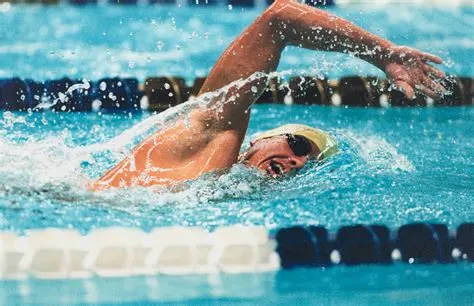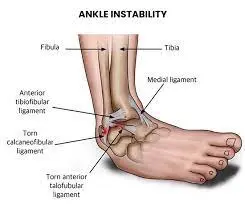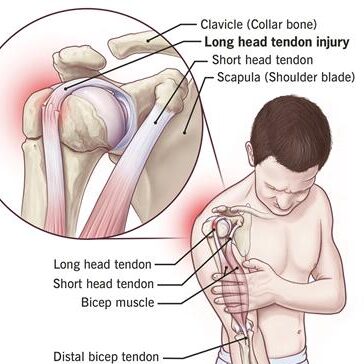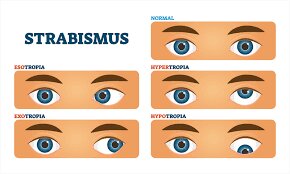Swimmer’s Shoulder
Table of Contents
What is a swimmer’s shoulder?
Swimmer’s shoulder is sometimes named shoulder impingement, subacromial impingement, or painful arc syndrome. It is a condition where swimmers often exacerbate their shoulders in which structures in the shoulder rub and pinch against one another while they swim due to the constant joint rotation.
One of the most complicated joints in the human body is the shoulder joint. It is designed to allow a very wide range of motion in the body. The sport of swimming is unique in that the shoulders are repeatedly used. The shoulder is used to propel the weight of the body, against the resistance of water for moving further. A maximal range of motion in the shoulder and flexibility is needed for the most efficient swimming. Sometimes, this can result in increased laxity in the shoulder or instability.
Swimmers have a marked potential for shoulder injuries due to the unique nature of the different strokes involved in swimming as well as the high volume of repetitions required during training. Swimmer’s shoulder is a word that can describe multiple shoulder pathologies. Pathologies include impingement syndrome, rotator cuff tendinitis, labral injuries, instability secondary to ligamentous laxity or muscle imbalance/dysfunction, neuropathy from nerve entrapment, and anatomic variants. In order for the sportsperson to return to the sport at an appropriate time, the doctor must be able to differentiate between these different etiologies.
Swimmer’s shoulder develops from repetitive use of the joint, which leads to irritation, inflammation, tears, and scarring. Symptoms may include Shoulder pain, swelling, and stiffness (limited range of motion).
Swimmer’s shoulder affects tendons, tissues that connect muscles to bones. The tendons in the shoulder become inflamed and swollen, and swelling in the shoulder increases pressure on nearby bones, muscles, or other tendons.
Inflammation usually affects the rotator cuff tendon (a group of tendons and muscles around the shoulder joint). These tendons can pressure the acromion process of the scapula, the top part of the shoulder blade bone. Friction on the shoulder blade can cause bone spurs (extra bony growths) to develop. Swimmer’s shoulder is one type of shoulder tendinitis.
An important thing to note, though, is that swimmer’s shoulder doesn’t only occur in people who are swimmers. It’s a common condition for athletes who do repetitive movements with their shoulders, such as volleyball players, baseball players, and softball players. Any kind of athlete who uses their shoulder muscles in repetitive overhead motions can suffer from a swimmer’s shoulder.
Causes of Swimmer’s Shoulder:
Repeated stress or movement in the shoulder joint irritates tendon and muscle tissue. Small tears develop in the joint, leading to inflammation and scar tissue. These small tears in tissue prevent the joint from moving smoothly. Left untreated, a swimmer’s shoulder can cause a labral or rotator cuff tear.
Swimming is a unique activity because it requires the upper body for the propulsive force primarily, with 90% of the driving force provided primarily by the torque generated from the shoulder. To swim at a selected level, each swimmer must log between 60,000 and 80,000 meters per week, equivalent to 30,000 strokes per arm. Fundamentally, the swim stroke requires the shoulder to move to range-of-motion extremes while enormous muscular force is exerted upon the shoulder
Swimmer’s shoulder has numerous possible causes, including:
- Overuse of the shoulder joint
- Excessive use of excessive training
- Not getting enough rest in between training
- Shoulder fatigue
- Improper swimming technique
- Weakness in the muscles, ligaments, and tendons in the shoulder
- Imbalanced growth of the muscles, ligaments, and tendons in the shoulder
- A previous shoulder injury
- An underlying cause
Risk factors:
Playing sports that require using the shoulders for overhead movement or forceful motion is the biggest risk factor for developing shoulder impingement. Common activities that could cause swimmer’s shoulder include:
- Swimming
- Tennis
- Baseball
Occupations may also increase risk. These include:
- Construction work
- Moving Heavy Boxes
- Painting
Another risk factor: old age and previous shoulder injuries, such as a dislocation in the shoulder, are also risk factors for shoulder impingement.
Signs and Symptoms of Swimmer’s Shoulder:
Swimmer’s shoulder symptoms include:
- Muscle weakness or fatigue.
- Reduced range of motion.
- Shoulder instability.
- Pain in shoulder
- Difficulty in reaching behind the back
- Pain in the shoulder when the arm is extended overhead
- Localized pain and inflammation in the shoulder
- Pain that aggravates when resting/lying on the shoulder
- Tenderness in shoulder
- Decreased range of motion(ROM), joint control, or muscle performance
- Change in stroke pattern in swimming and/or “lazy elbow”
- Pain and inflammation in the shoulder
- Pain that radiates into the neck or down the arm
- Pain that aggravates with weight on the affected shoulder
- A reduction in joint mobility, control, or muscle performance
Symptoms of a swimmer’s shoulder tend to be more destructive during or immediately after swimming. Symptoms are due to the position of your arms and upper extremities placed while swimming.
Reaching overhead and turning the hand inward, similar to the motion that occurs during the crawl or freestyle stroke in swimming, can cause rotator cuff tendons or shoulder bursa to become pinched underneath the acromion process of the shoulder blade.
When this compression occurs in the shoulder, the tendons or bursa can become inflamed, leading to pain and patient have difficulty with normal arm use.
This condition may also occur due to the laxity of the ligaments surrounding the shoulder joint. Over a long time, ligaments in a swimmer’s shoulders become stretched due to overuse and lax, leading to shoulder joint instability. This may cause the shoulder joint to be loose and may lead to compressing of the structures in the shoulder.
If a patient is experiencing any of these symptoms and is a recreational or competitive swimmer, a person may have a swimmer’s shoulder. It is recommended that person may visit a physician to get an accurate diagnosis of the condition and to begin the correct treatment for the shoulder.
Diagnosis:
A doctor will review the patient’s symptoms and perform a physical exam. The doctor may check for symptoms by pressing on different areas of the shoulder to check for pain, swelling, or tenderness. The doctor will also check the shoulder’s mobility and range of motion.
Imaging tests to visualize injuries:
X-ray checks for broken bones or dislocated bones or visualizes the shoulder bone
A CT scan or MRI reveals tendon tears and examines soft tissue structures such as tendons, ligaments, etc.
The doctor may check any changes in the training or activities that could have caused shoulder impingement.
Components of this examination may include:
- Palpation in arm
- Measures of muscular strength
- Shoulder special tests
Often test used to diagnose shoulder condition is called Neer’s test.
Neer’s test: In this test. physician elevates the arm overhead to the maximum degree. If this results in pain, rotator cuff tendons may be getting pinched, and the test is considered positive. Swimmer’s shoulder may then be suspected.
Treatment of Swimmer’s Shoulder:
Appropriate treatment is needed in the swimmer’s shoulder for managing pain and inflammation in the shoulder and improving the movement of the shoulder so you avoid pinching structures inside the joint. Treatment may include:
- Rest
- Medicine
- Physical therapy
- Exercise
- Injections
- Surgery (in serious cases)
Conservative treatment:
Rest: The patient may take a rest if the pain is in the shoulder. It means taking total rest with no swimming for about 1 to 2 days depending on the severity of the condition. If pain is not more than you can swim, but decrease yardage while you avoid butterfly, backstroke, or kicking only with your arms at your side. Take rest for some days until the pain reduces and can do pain-free shoulder movement before you resume swim training.
Cold pack: Apply an ice pack on the pain area or after training for 15-20 minutes to reduce swelling and pain.
Medical treatment:
Medication may include over-the-counter anti-inflammatory medication such as NSAIDs – ibuprofen. It may help to reduce pain and inflammation in the shoulder. If your swimmer’s shoulder is severe, a doctor may prescribe stronger medication to manage inflammation.
While taking medication, it’s advisable to take rest, so resting for a week or two and avoiding swimming (or other aggravating shoulder movements) may be necessary.
Injections: Steroid medication can reduce inflammation in the shoulder joint so the patient may get relief from pain. Steroid injections are available that provide temporary pain relief while you rest and heal.
Surgical treatment:
Most people with swimmer’s shoulders do not need surgery. But surgery may be an option if shoulder pain or symptoms persist and fail to improve with conservative treatments. A surgeon can perform a procedure termed subacromial decompression, in which it removes inflamed tissue and bone spurs in the shoulder.
In some cases, surgeons can take a minimally invasive procedure to the treatment using an arthroscope. During arthroscopic shoulder decompression, a surgeon makes several small incisions (cuts) around the shoulder. The surgeon visualizes the shoulder joint using a thin, lighted tube called an arthroscope. This technique allows the surgeon to do an operation without a large incision. During this procedure, inflamed tissue and bone spurs are removed from the underside of the acromion process of the shoulder blade, giving more space to the shoulder joint. After surgery, you can slowly return to swimming (and all other activity) in about eight weeks.
Physical Therapy Treatment:
A physical therapy program is often a beneficial and necessary treatment for recovering from a swimmer’s shoulder. Physical therapy treatment is given by a physical therapist (PT). Your PT can assess your condition by physical examination doing special tests and imaging. Physiotherapy doctors may prescribe treatments and exercises to improve shoulder mobility and strength without any medicine.
The doctor may also use various treatments including modalities to decrease pain and improve circulation to your shoulder muscles in order to facilitate healing.
- Physical therapy treatments for swimmer’s shoulder may incorporate:
- Modalities
- Exercise
- Joint mobilizations
- Heat
- Ice
- Taping
- Injections:
Some people get comfort and relief from a cortisone injection into their shoulder. Cortisone is a powerful anti-inflammatory medicine to reduce inflammation in the shoulder. When cortisone is injected into the shoulder joint, it can help in reducing pain and decrease swelling in the rotator cuff and bursa. A cortisone injection may lead to improved mobility in the shoulder with less pain.
A physical therapist will use ice to decrease inflammation and manual techniques such as massage, stretches, and joint mobilizations to treat the condition. They’ll also provide essential education like tips for better form.
- Modalities:
Modalities such as:
Electrical stimulation: To stimulate muscles and increase strength
Ultrasound: To reduce swelling and pain
Interferential current therapy(IFT): To decrease pain
- Heat:
As the pain in the shoulder is from a long time, hot modality may be effective.
Applying a hot pack for 10-15 minutes after exercise to relieve pain and prevent muscle spasms.
- Exercises for Swimmer’s Shoulder:
Exercises for a swimmer’s shoulder can help to improve the mobility of the arm and increase the strength of the rotator cuff muscles. This can help keep the shoulder from pinching when a person is swimming and reaching overhead. Exercises include:
Range of motion exercises: Active and active assisted exercise of the shoulder joint.
- Shoulder flexion
- Shoulder Extension
- Shouder abduction-adduction
- Shoulder internal-external rotation
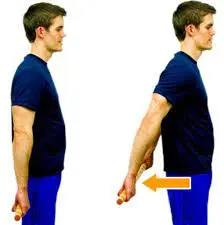
Scapular Stabilizing Exercise:
- Prayer press
Instructions:
-Begin on your hands and knees and then sit back towards the heels, bringing the chest towards the floor.
-Extend the arms as far as possible overhead position.
-Complete 3 repetitions, for each repetition hold for 30 seconds.
- Stretching: Stretching is helpful in practice for a workout and is crucial when it comes to preventing injury. Stretches help to warm up the muscles and prepare the body for movement before getting in the water:
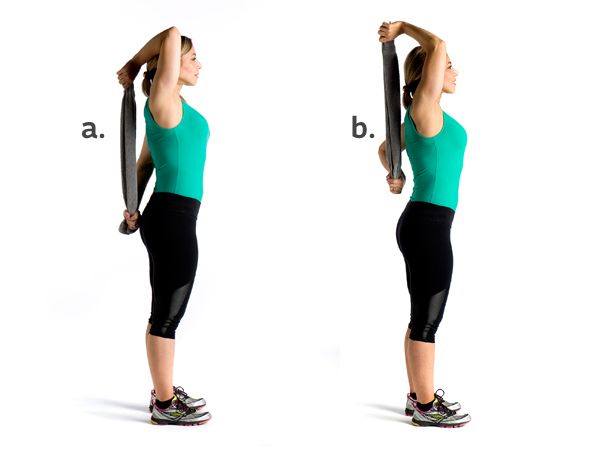
Internal Rotation Towel Stretch
This exercise stretches the shoulder joint capsule. To perform it:
- Hold a towel over your shoulder.
- Reach behind your back with your other arm and grab the towel.
- While holding the towel behind the back, slowly pull the towel up until a gentle stretch is felt in the shoulder with the hand behind your back.
- Hold the stretch for 15-20 seconds, and then slowly release.
- Repeat five-ten times.
Prone Scapula Squeeze
Sometimes scapular movement problems can be one cause of the swimmer’s shoulder,3 so getting muscular control of the scapula may be a good idea. To do this:
- Lie on the stomach on a bed with the painful arm hanging down to the floor.
- Slowly lift the arm to the side while keeping the elbow straight, without bending.
- Once the straight arm is parallel to the floor, hold the position for 3-5 seconds, and then slowly lower the arm down.
- Repeat the exercise 10-15 times.
- Strengthening :
Strengthening exercise increases the strength of muscles surrounding the shoulder joint which helps to do the movement easy and full-range movement.
Rotator Cuff Strengthening
If weakness in the rotator cuff muscles is causing the swimmer’s shoulder, then strengthening of this rotator muscle group may be warranted. To strengthen the rotator cuff muscles, the following method is used :
- Lie on the side with the affected shoulder on top.
- Bend your elbow 90 degrees while keeping it against the rib cage.
- Slowly lift the back of the hand up towards the ceiling. Be sure to keep the elbow bent and pressed against the ribs as you lift up.
- Hold for 3-5 seconds, and then slowly lower.
- Repeat the exercise 15-20 times.
Wall press
Child’s pose
Cross arm stretch
Tricep stretch
Doorway pec stretch:
Instructions
Start in a standing position in the middle of a doorway.
With the elbows bent, place the forearms on the side of the doorway at a 90-degree angle from the sides.
Keeping the shoulders relaxed, gently step forward until you feel a slight stretch in the shoulders.
Hold this position for 30 seconds for 3 repetitions.
How Long to Get Better?
Most episodes of swimmer’s shoulder last for about 8 to 10 weeks. In severe conditions, it lasts up to two to three months. Most often, the symptoms slowly decrease with rest and gentle stretching.
As your symptoms improve, you can gradually return to normal activity and swimming, but performing a few shoulder exercises 2-3 times a week may be required to keep your shoulder strong and mobile. This may help control future episodes of impingement from the swimmer’s shoulder.
Summary:
If a person has a pinching and sharp pain in his shoulder or shoulders while swimming, then the person may be suffering from a swimmer’s shoulder. This condition may limit the ability to swim and use their arm normally for functional activities.
Treatment involves rest, anti-inflammatory medication, and exercise to reform normal shoulder mobility. Most cases resolve fully within a few months, but exercises may be required to help keep the pain away so you can enjoy a lifetime of pain-free swimming. Most of the cases are treated by physical therapy and medicine. But some rare cases required surgery to treat. After surgery physical rehabilitation involves stretching and strengthening to help patients or athlete to get back to their normal life. It is important for swimmers to take care while swimming. Use proper stroke techniques for swimming. Start swimming after complete recovery from the surgery.
FAQs:
What is the first aid for a swimmer’s shoulder?
Conservative treatment for swimmer’s shoulder.
The first thing to do with a shoulder injury is RICE treatment—Rest, Ice, Compression, and Elevation. It is important to give the injured region plenty of rest and not to return to swimming too quickly. Start swimming as healing completes.Is hot water good for a shoulder injury?
Hot water helps in relieving the pain.
Moist heat, such as a hot bath, hot water shower, or a heat pack, can help loosen up the shoulder when a person feels pain in the shoulder. An ice pack applied to the shoulder 15-20 minutes at a time and 3 to 4 times a day, may also help reduce the swelling when you are in pain.Does the swimmer’s shoulder require surgery?
In many cases, shoulder impingement can be treated with nonsurgical conservative options, but in more complicated cases or when damage to the joint structures is more extreme, shoulder surgery may be required to repair damage and restore normal, pain-free movement and function in the shoulder.
How do you finally fix and prevent swimmers’ shoulders?
There are 3 Ways to Help Prevent a Swimmer’s Shoulder
Fix your Stroke Technique while swimming.
Stretching of shoulder and Recovery.
Strengthen the Inner Rotator Cuffs to prevent swimming.Can you get the swimmer’s shoulder from sleeping?
If a person always sleeps on the right or left side, the constant nightly pressure on that shoulder’s tendons against underlying bone can cause them to become inflamed. This is defined as rotator cuff tendinitis or impingement syndrome.

